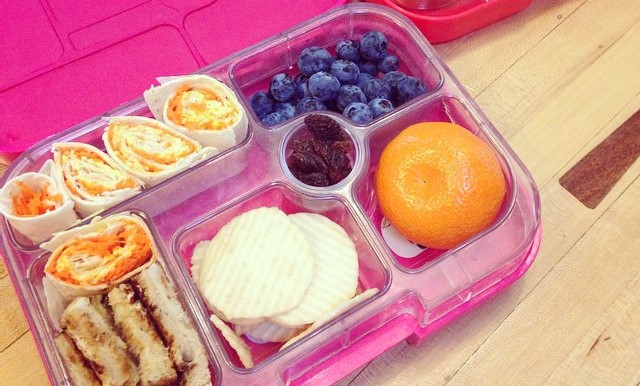I have to be honest: lunchboxes are the bane of my existence. I’ve been making school lunches now for eight years, and I’ll be making them for another thirteen. I am in the eye of a hellish kind of storm that sees me scrounge the cupboards and fridge every morning, trying to find something healthy to include in my kids’ lunchboxes.
I make a rod for my own back, I suppose. I try not to use pre-packaged snacks where possible, and my goal is to send me kids to school with a lunchbox full of healthy foods, and see it come home empty at the end of the day.
Is that too much to ask?
(The answer is yes, most of the time, it most definitely is.)
But what I have learned in my years of making lunches that do get eaten, is that there are foods my kids love that are pretty much the devil. And there are foods that I think are healthy, that my kids won’t even sniff at during their lunch break.
So I’ve been working on subbing out those foods my kids love, and replacing them with foods that are slightly closer on the health spectrum to those I’d like them to eat. All without tipping them off that that’s what I’m doing.
Here are some substitutions I’ve made lately that have gone quite well.
I’ve swapped out:
-
Flavoured yoghurts for plain yoghurt and fruit
Flavoured yoghurts are full of preservatives, sugar, and artificial colours and flavours. Bleurgh. But they’re also sweet and delicious, and enticing to small people. So I now give my kids plain yoghurt with some honey and frozen berries mixed through. The frozen berries keep it cool and thaw by lunchtime, and the honey provides some sweetness – but at a level I can control.

-
Deli meats for chicken or vegetarian options
Processed meats are full of salt, chemicals and preservatives such as nitrates, which can be cancer-causing. No way am I putting those in my kids bodies! But my son loves his ham and cheese sandwich so much, he’d eat one every day if I let him. So I’ve had to be careful here, but I’ve found a couple of substitues he will tolerate. One is rotisserie chicken from the supermarket (brought home and chilled in the fridge before putting on the sandwich, and then kept cool with an ice brick). Another is avocado, grated carrot and grated cheese. I’ll keep working to find others he likes too – I know they’re out there!
-
Shop bought biscuits and muffins for home-made goodies
We all know ‘muffin’ is code for ‘cake’, don’t we? And the ones you buy from the supermarket are full of preservatives and sugar to make them last for ages and taste really good. The biscuits you buy at the supermarket are often also full of corn syrup and maltodextrin, as well as artificial colours. They’re basically a chemical cocktail. You can do better than that in your own kitchen. That’s what I do now. I spend an occasional Sunday baking up big batches of muffins, slices and cookies, and then I freeze them in air-tight containers. That way, they’re ready to add to lunchboxes in the morning, and they’re thawed and fresh by lunchtime – all without nasty chemicals.
-
Fruit juice for water
Yes, it comes from fruit, but no, it’s really not healthy. Fruit juice provides all the sugars from fruit (in a concentrated way and in an amount you wouldn’t usually take in if you were eating the whole fruit) without any of the goodness of the fibre. I have discovered my kids get pretty excited if I add something to flavour their water. Sometimes I pop in a sprig of mint, sometimes some frozen berries, or a slice of apple. And hey, if that helps them to drink more water during the day, I’m all for it!

-
Dried fruit and fruit roll ups for smaller portions and real fruit
Just as with fruit juice, sugar is the problem with dried fruit and fruit roll up. It’s not bad in itself, but the portions we usually dish out for our kids are way too big. It helps to imagine the size of the fruit before it was dehydrated – because it’s only the water that has been removed. All of the sugar and calories are left in that tiny piece of dried fruit. So a tablespoon of sultanas, or four dried apricots halves are plenty. Roll ups can vary wildly, with the worst offenders being full of artificial colours, flavours and preservatives, but even the ones that are pure fruit have too much sugar. I know it sounds old fashioned, but try replacing them with real fruit. Your child will get all the benefits of the fruit fibre.

